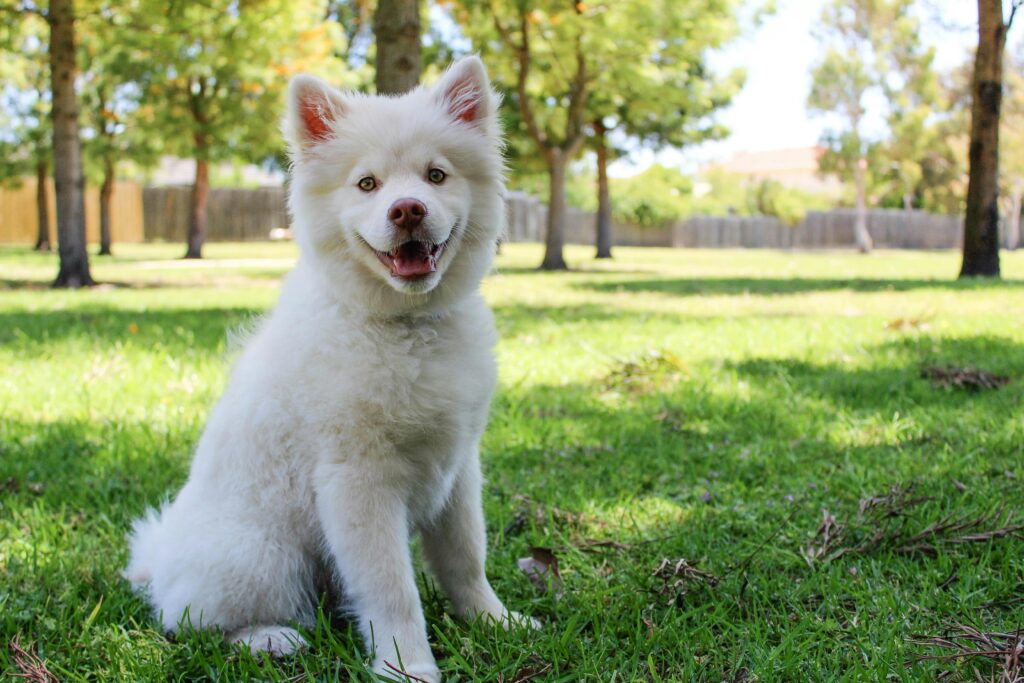Can Dogs Have Autism? What Science Says

Table of Contents
Have you ever noticed that some dogs seem to display behaviors that mirror those seen in children diagnosed with autism? It’s a perplexing question that has sparked interest among dog owners, veterinarians, and scientists alike: Can dogs have autism? Understanding the canine mind is complex, and as we delve into this topic, we’ll explore research, behavior patterns, and expert opinions to uncover what science really says.
Why It Matters

As pet owners, we seek to provide the best for our furry companions. In recent years, the conversation surrounding canine mental health has gained traction. A report from the American Animal Hospital Association reveals that around 30% of dogs exhibit behavioral problems that could indicate an underlying mental health issue. This statistic not only raises concerns among dog owners but also emphasizes the need for awareness regarding dog behaviors that may resemble autism.
For instance, consider a scenario: Emma, a loving dog owner, notices that her Golden Retriever, Max, avoids social interactions, becomes overwhelmed in new environments, and has repetitive behaviors like running in circles. Questions about Max’s mental health lead Emma to research and seek help, underscoring the importance of understanding our dogs’ psychological states. This article aims to shed light on whether dogs can have autism and how to recognize signs that may warrant professional attention.
Key Insights
1. Understanding Canine Behavior
Canine behavior can be diverse and complex. While dogs may not be diagnosed with autism in the same way humans are, they can exhibit behaviors associated with autism spectrum disorder (ASD). Symptoms may include:
- Social Withdrawal: Similar to children on the spectrum, some dogs may show less interest in social interaction with humans or other pets.
- Repetitive Actions: Dogs may engage in unique behaviors, like repetitive digging or spinning.
Recognizing these signs is crucial for early intervention.
2. The Role of Genetics
Research indicates genetics play a part in canine behavior. A study published in the journal “Animal Behavior” found specific genetic markers associated with behavioral traits in dogs. Understanding your dog’s breed and predispositions can help you identify unusual behaviors early on. Breeds like the Border Collie and Siberian Husky tend to be more prone to behavioral quirks that may resemble autism.
3. Environmental Influences
Dogs are incredibly sensitive to their environments. Factors like early socialization, exposure to various stimuli, and overall experiences shape their behavior. A study by the American Journal of Veterinary Research highlighted that dogs raised in enriched environments exhibited better coping mechanisms. Ensuring that dogs have a wholesome, stimulating environment can mitigate potential behavioral issues.
4. Seeking Professional Help
If you notice concerning behaviors, consult a veterinarian or an animal behaviorist. They can help identify whether the behaviors resemble autism or if they could be indicative of anxiety, obsessive-compulsive disorder, or other issues. Early intervention is key. A report from the Journal of Veterinary Behavior shows that behavioral modification and training can have significant positive effects, often reducing unwanted behaviors by up to 70%.
5. Enrichment and Training
Introducing enrichment activities can significantly improve a dog’s mental health. These activities might include:
- Puzzle toys – Engage their mind and keep them occupied.
- Training classes – Improve social skills and reinforce positive interactions.
Studies show that engaging dogs in regular mental and physical activities enhances overall behavior, promoting calmness and reducing stress.
Resources & Tools

1. PetMD’s Canine Behavior Resource
Pros: A comprehensive online database focused on dog health and behavior. Offers articles and advice tailored to canine behavior.
Cons: While informative, some content may be overly technical for average pet owners.
2. Doodle Pets: Puzzle Toys
Pros: Highly rated interactive toys designed to stimulate your dog’s mind. Over 10,000 five-star reviews indicate effectiveness.
Cons: Higher price point compared to basic toy options.
3. The Dog Trainer’s Handbook by Nancy Holmes
Pros: An engaging read that offers training tips and behavior modification strategies.
Cons: Lacks digital resources; best suited for readers who prefer physical books.
Mistakes to Avoid
1. Ignoring Warning Signs
Many pet owners overlook peculiar behaviors, writing them off as quirks. However, distinguishing between normal and concerning behaviors is crucial. Make a habit of observing your dog’s behavior changes.
2. Relying Solely on Online Resources
While the internet is packed with information, dog owners should consult professionals for accurate diagnosis and behavioral interventions. Online forums can provide support but should not replace veterinary advice.
3. Lack of Socialization
Neglecting to socialize your dog can lead to anxiety issues and fear-based behaviors. Gradual exposure to a variety of environments and social situations should be part of your dog’s routine.
Real Examples

Consider the case of a Labrador Retriever named Bella. After being adopted, her owner noticed that Bella would often retreat to corners when new visitors arrived and bark endlessly at passing cars. Through consultation with dog behaviorists, it was discovered that Bella displayed signs typical of anxiety rather than autism. A structured training program was put in place, focusing on socialization and exposure therapy. Over time, Bella was not only able to greet visitors calmly but also enjoy long walks without spooking at traffic.
Another example involves a Dachshund named Charlie who exhibited obsessive behaviors, such as continuous pacing and whining. His owner, suspicious of autism, sought veterinary advice, revealing that Charlie was suffering from separation anxiety. After implementing a behavioral modification plan, along with interactive toys, Charlie became more relaxed and happy.
Tailored Tips
For First-Time Dog Owners
Understanding canine behavior can be daunting. Focus on basic training and early socialization. Consider taking your dog to puppy classes that emphasize positive reinforcement.
For Busy Professionals
If you can’t be home often, ensure your dog has engaging toys or consider a dog-walking service that offers socialization opportunities during your absence.
For Families with Kids
Involve children in the training process. Teaching kids to understand canine communication strengthens the bond between them and the dog, paving the way for a positive relationship.
Conclusion
While the question “Can dogs have autism?” remains somewhat open-ended, it’s vital to understand the complexities of canine behavior. By recognizing the signs, contributing factors, and seeking professional guidance, dog owners can enhance the likelihood of a healthy, happy life for their pets. Try integrating one of the suggested enrichment activities into your dog’s routine today and share your progress in the comments below!
For further reading, check out related posts on understanding dog behavior and effective training methods!
FAQs
1. Can dogs be diagnosed with autism?
Not in the same way humans are. However, they can exhibit behaviors that mimic autism.
2. What are some signs of autism-like behavior in dogs?
Social withdrawal, repetitive actions, and heightened sensitivity to sensory stimuli may indicate issues.
3. How can I help my dog with behavioral issues?
Engagement through training, socialization, and consulting a veterinarian are key steps.
4. Are certain breeds more prone to autism-like behaviors?
Yes, breeds such as Border Collies and Siberian Huskies can show behaviors associated with anxiety and other disorders.
5. When should I seek professional help for my dog’s behavior?
If your dog displays persistent anxiety, aggression, or withdrawal, seeking professional guidance is advisable.
By staying informed and involved, you can ensure your dog leads a fulfilling life, free from the limitations imposed by unresolved behavioral issues.



